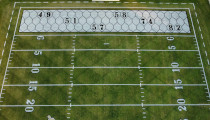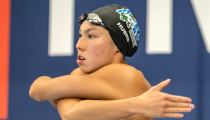The Legal Year in Review for 2022 was defined by a very important United States Supreme Court case involving prayer in public schools and continued development of both Title IX issues and transgendered athletic participation. As always, there were also cases involving the duties of school personnel relative to the safety of the athlete. The following is not comprehensive but provides information where the law is on these topics.
Kennedy v. Bremerton School District
The prayer-in-school decision from the United States Supreme Court (USSC) was Kennedy v. Bremerton School Board. In this case, the USSC ruled in that there are certain circumstances under which a public-school employee – in this case a football coach, Joseph Kennedy – can pray while on supervisory duty in and around both students and parents without running afoul of the First Amendment “No Establishment” Clause of the United States Constitution. Kennedy had engaged in prayer with a number of students and adults after school football games contrary to employer directives that he discontinue the practice in order to protect the school from a lawsuit alleging a constitutional violation.
The USSC ruled in Coach Kennedy’s favor, and this ruling by the Supreme Court that an employee of a public school district can pray while he/she is “on the clock” caught many by surprise. It certainly caused many athletic administrators to refocus on the implications of the ruling as to how their community and coaching staff behavior would be affected. Though this case was/is controversial through today’s political lens, it did not create any “new” rules that fundamentally change the circumstances of when prayer in public school is allowed. The USSC opinion only endorsed the right of Coach Kennedy to pray under the limited circumstances of his very particular situation, writing:
“During the postgame period when these prayers occurred, coaches were free to attend briefly to personal matters—everything from checking sports scores on their phones to greeting friends and family in the stands. Mr. Kennedy’s actual job description left time for a private moment after the game to call home, check a text, socialize, or engage in any manner of secular activities. Others working for the District were free to engage briefly in personal speech and activity. That Mr. Kennedy chose to use the same time to pray does not transform his speech into government speech. (Pg. 18-19)”
This ruling does not open the door for all prayer in school at any time; it simply carves out a bit more of an exception that still can be controlled by the public employer. There are some implications for athletic directors, but not much should change. It will require more diligence and awareness – a need to ensure an awareness of employees, students or parent/community members who may want to use a contest and/or school venue for exercising a religious practice.
First Amendment cases are extremely fact-specific, and so the decisions are narrow. It is unnecessary to assume that similar conduct by any coach or public school employee would be permissible and problem-free. There still needs to be respect for personal religious beliefs and practices (in accordance with the Free Exercise Clause), and also continued respect for the importance of no endorsement of religion occurring on school property or at school events. A school district’s Board policies prohibiting endorsement are still valid and applicable. The bottom line is that this case simply provides further clarification to existing Constitutional interpretations.
Takeaways – In contemplating best practices going forward, consider the following from the case:
- A governmental employee cannot coerce prayer;
- Governmental employees can pray so long as they are not avoiding their other post-game responsibilities;
- Personal prayer is permitted;
- No school employee can require student attendance or participation;
- There can be no coercion of students to participate; and
- Prayer must be done at a time when the coach does not have specific post-game duties and when the post-game time is generally open for all.
Update – In an October 25, 2022 filing in the Washington State Court where Coach Kennedy initiated his constitutional claim, filed by his attorney and the attorney for the school district indicated that “…. Kennedy is to be reinstated to his previous position as assistant coach of the Bremerton High School football team on or before March 15, 2023.” All indications are that Coach Kennedy will be coaching football again in 2023 for the Bremerton Public Schools.
Concussion Protocol
There continue to be legal claims that school districts have failed in their legal duty to implement proper concussion protocols for the health and well-being of students. An important reminder is reflected in the following situation.
Shane Skillpa of Allegheny County, Pennsylvania graduated from high school in 2012. As a sophomore playing football in 2009, in practice one day his football coaches had the players engage in the “Oklahoma Drill.” Upon contact in the drill, Skillpa’s helmet cracked. The coaches never removed him from play. Instead, he said they told him he had “his bell rung,” had him get a new helmet — because his was broken — and let him continue practicing after about 15-20 minutes.
Over the next couple of days, Skillpa continued to practice. After a few days, his mother started to see a noticeable change in behavior and took him to a doctor. He ended up in concussion treatment for several months over the next two years before he was cleared for further activity. In September of 2016, having similar symptoms, he went back to see a doctor. That doctor linked those symptoms to the original concussion from 2009, and diagnosed him with a traumatic brain injury, allegedly stemming from the concussion he suffered in August 2009. He sued a number of parties, claiming that he suffered from cognitive impairment, organic affective disorder and PTSD – all caused by the concussion he had in 2009 for which he received no immediate care when it occurred. The case went to trial in September of 2022.
Skillpa alleged that the coaches and other parties had a duty to recognize his injury potential from a cracked helmet and had a duty to hold him out of additional drills to get a medical review. That they did not do so constituted a breach of existing duties which caused and contributed to his traumatic brain injury.
After a 10-day trial and four hours of jury deliberations, the jury concluded that Skillpa was not entitled to any damages. The jury did not find a link between his current health condition and the actions of the parties in August of 2009. A key element of the defense was that the coaches did not know he was hurt, that Skillpa never indicated that he was hurt, and that the coaches did not see the contact as excessive or out of the ordinary.
It is important to note that the jury viewed this case through the lens of concussion protocols in place in 2009 as opposed to 2022. The duties of coaches were defined differently then as the science of concussions has greatly accelerated, which has helped create new parameters of concussion protocol.
Takeaways – One, it is still possible that actions from way back may still be a basis for a legal claim. Two, the necessity of coaches to be properly trained to recognize potential for injury requires a continued administrative commitment to training and expected conduct.
Title IX and Gender Equity
OCR Title IX investigations are always occurring. One such investigation involving equity in gender benefits, opportunities and treatment was resolved in 2022 in Oregon. In Salem-Keizer School District No. 24J in Oregon, allegations of inequitable athletic access for girls concerning locker rooms, practice, competitive facilities, equipment, uniforms, supplies, and the opportunity to receive adequate coaching at a district high school was investigated.
Facilities – Part of the complaint was that the district may have not provided locker rooms, practice and competitive facilities to the girls softball teams that were comparable to those offered to the boys baseball teams at the school. Specifically, that boys baseball at the school enjoyed superior playing fields, dugouts, bullpens, fencing, landscaping, bleachers, batting cages and storage compared to what was provided for girls softball. Additionally, boys baseball was provided with use of a team room, whereas girls softball was not.
The district acknowledged that the girls softball fields, dugouts and scoreboard required updates and/or maintenance and that the district was planning to create a team room for girls softball’s use.
Uniforms – Another part of the complaint suggested that the boys baseball teams were provided with both uniform tops and bottoms, while girls softball teams were only provided with uniform tops. The district provided OCR with a uniform replacement schedule which reflected the boys baseball teams last received new uniforms during the 2021-22 school year and girls softball received new uniforms in 2020.
Coaching – Finally, information was received reflecting that the girls softball teams also have less opportunity to receive coaching as compared to the boys baseball teams. Information provided suggested that the girls softball head coach was not provided with a prep period at the end of the school day, requiring the coach to prepare the fields during practice or before games and making the coach unavailable to coach the girls at those times, whereas the boys baseball coach was provided with a prep period at the end of the school day, resulting in the coach being available to coach the boys at those times.
The school district agreed to conduct assessments of the facilities, equipment and supplies, and opportunities to receive coaching provided to the boys and girls interscholastic athletic teams at the school to ensure that members of both sexes are provided with equivalent benefits, opportunities and treatment. The resolution agreement also required that the district implement a corrective action plan to remedy any identified inequities between girls and boys athletic teams at the high school.
Takeaways – Most of the OCR complaints like those above are easily addressed – changing the teaching schedule of the softball coach to open the coach’s last teaching block, for example. Others, such as facility issues, obviously, may be more costly, but can or need be addressed in any strategic plans. These issues were relatively simple to address, but the issues are illustrative of the awareness athletic directors need to have.
Title IX and Transgender Participation
The essence of conflict with transgender sports participation currently relates to the issue of gender identity v. birth gender of the student and the implications of a male-to-female transition and fairness of competition. The issue of male students identifying as females and their ability to compete against females has become politically volatile in 2022. Governing entities from state legislatures to local school boards have been debating this topic in various forms quite extensively. Some states now prohibit males transitioning to female from competing against females in high school sanctioned sports.1 These laws will most likely become reviewed by courts for constitutional defects, specifically as they relate to the 14th Amendment “equal protection of the law” clause. A court review will determine whether such a law would pass constitutional review if it treats males transitioning to females (cannot compete against females) differently from females transitioning to males (can compete against males.)
In 2020, the USSC heard Bostock v. Clayton County, a Title VII case about whether an employer could discriminate against gay and transgendered employees. (Title VII applies to employment discrimination, Title XI applies to educational discrimination.) In that case, the USSC wrote, “….it is impossible to discriminate against a person for being homosexual or transgender without discriminating against that individual based on sex….” which is what Title VII protects against.
Based on the Title VII case language, the Biden Administration issued a Title IX executive order prohibiting discrimination based on gender identity and sexual orientation. A Tennessee federal judge issued a temporary injunction enjoining that particular Title IX guidance. The 20 states listed as plaintiffs on the injunction argued that the Department’s guidance on Title IX interfered with their ability to enforce laws that prohibit transgender students from using bathrooms and locker rooms or playing on sports teams that align with their gender identity.
So, a legal collision is looming relative to how Title IX will apply to transgendered athletic participation if Title IX application is contrary to state law. The Biden Administration has not yet responded by providing any additional clarifying guidance as to how Title IX is to be interpreted for purposes of transgendered sports participation. State and local government entities are, therefore, still acting separately.
In an attempt to spur some movement on this matter, in September of 2022, dozens of women’s rights and gender justice advocates sent a letter to President Biden, asking him to set up a separate Title IX rule that would protect transgender high school and college students’ eligibility to play school sports on teams that align with their chosen gender instead of the gender they were assigned at birth. According to the statement from the National Women’s Law Center, the groups are asking President Biden to unveil a rule to ensure “all students, including transgender, non-binary and intersex students, can participate fully and equally in school sports.” No action on this request has yet been taken.
Takeaways – Look for more activity on this topic in 2023. As we await the Biden Administration directive on this issue, state and local governments will fill the void. The legal trends of 2022 certainly were interesting. There do not appear to be any imminent public school religion cases that are near USSC review. The bigger issues for 2023 will be how the state laws banning some transgender sport participation will be implicated if the Biden Administration positions that Title IX protects transgender sports participation.
Resource
1. In a June 2022 NIAAA summary on this topic, it is noted that most of the action has been at the state legislative level with 18 states passing some sort of law restricting sports participation to gender assigned at birth.
John E. Johnson, J.D.
John E. Johnson, J.D., recently retired after 18 years as athletic director at Shawnee Mission South High School in Overland Park, Kansas, and 31 years overall in education. He was an attorney for a number of years prior to entering education and has a law degree from Washburn University in Topeka, Kansas. He is a member of the High School Today Publications Committee.
Most Recent Articles







